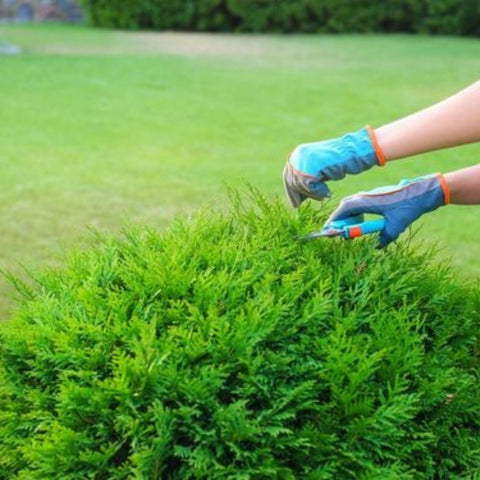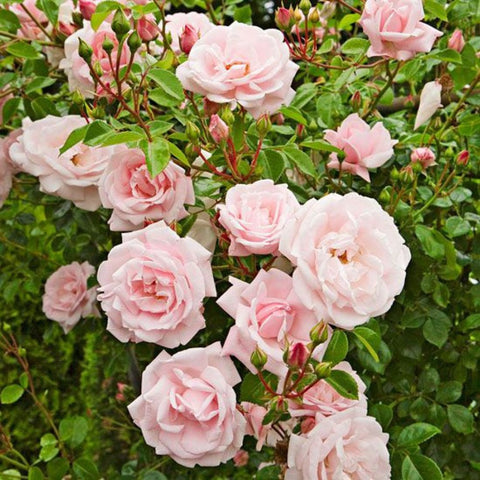Blog Post - Trimming Shrubs in Spring
Whether you're a seasoned gardener or just starting out, one of the essential tasks for maintaining a neat and tidy garden is trimming shrubs. By taking the time to trim your shrubs in the spring, you can not only enhance the overall appearance of your garden but also promote healthy growth and ensure a long-lasting impact. In this article, we will delve into the importance of spring trimming, the tools you'll need, the steps to follow for successful trimming, tips for maximizing the results, trimming different types of shrubs, the significance of safety, and ultimately, why you should take action and start trimming today.
Understanding the Importance of Spring Trimming
To truly grasp the significance of trimming shrubs in the spring, it's essential to understand the growth cycle of these plants. Most shrubs undergo a dormant period during the winter, where growth slows down or ceases entirely. When spring arrives, and the temperatures begin to rise, shrubs enter their most active growth phase. This is the perfect time to trim, as it allows new growth to emerge and flourish throughout the season.
Trimming in the spring also offers several advantages. Firstly, it helps maintain the desired shape and size of your shrubs, preventing them from becoming overgrown and unruly. Additionally, removing dead or damaged branches stimulates healthy growth and prevents diseases from spreading to the rest of the plant. By engaging in spring trimming, you are laying the foundation for a thriving and attractive garden.
Tools Needed for Trimming Shrubs
Before embarking on your spring trimming journey, it's important to gather the necessary tools. Here is a list of essential tools along with descriptions and recommendations for each:
-
Hand pruners: Ideal for cutting small branches and stems, hand pruners are a must-have tool for precise and controlled trimming. Look for pruners with a bypass design for clean cuts.

-
Loppers: Designed for thicker branches, loppers provide the extra strength needed to tackle larger shrubs. Invest in one with extendable handles for added reach.

-
Pruning saw: When dealing with very thick branches, a pruning saw is the go-to tool. Opt for one with a curved blade for smoother and more efficient cuts.

-
Hedge shears: For shaping hedges and achieving a uniform appearance, hedge shears are essential. Choose a pair with wavy blades to prevent branches from slipping while cutting.

-
Safety gear: To ensure your well-being while trimming shrubs, don't forget to wear adequate safety gear such as gloves, safety glasses, and sturdy, non-slip shoes.

By equipping yourself with these tools, you'll be well-prepared to tackle your spring trimming tasks effectively and efficiently.
Steps to Follow for Successful Spring Trimming
Now that you have gathered the necessary tools, it's time to dive into the steps for successful spring trimming. Follow these guidelines to achieve the best results:
-
Assess the shrub's condition: Take a closer look at your shrub and evaluate its overall health and shape. Identify any dead or damaged branches that need to be removed.

-
Identify dead or damaged branches: Dead or damaged branches not only detract from the appearance of your shrub but can also hinder its growth. Carefully prune these branches back to healthy wood.

-
Maintain the desired shape and size: Determine the shape and size you want your shrub to maintain and trim accordingly. Be mindful of the shrub's natural growth patterns and avoid excessive pruning.

-
Proper technique for making cuts: When making cuts, use the appropriate tool for the branch size. Make clean, angled cuts just above a bud or lateral branch to promote healthy new growth.
By following these steps, you'll achieve well-maintained shrubs that positively contribute to the overall aesthetics of your garden.
Tips for Maximizing the Results
To truly maximize the results of your spring trimming efforts, keep the following tips in mind:
-
Timing the trimming appropriately: Spring trimming should be done early in the season before new growth emerges fully. Be cautious not to trim too late, as it may result in stunting the plant's growth.
-
Providing proper care and maintenance after trimming: After trimming, provide your shrubs with the necessary care, such as watering, fertilizing, and mulching, to support their recovery and encourage healthy growth.
-
Avoiding common mistakes and pitfalls: Be mindful not to over-prune your shrubs, as this can weaken them and cause stress. Additionally, avoid trimming during periods of extreme heat or drought.
By following these tips, you'll ensure your shrubs thrive and add beauty to your garden all season long.
Trimming Specific Types of Shrubs
Different types of shrubs may require specific trimming techniques. Here are some guidelines for trimming common shrub varieties:
-
Flowering shrubs: Trim flowering shrubs immediately after their blooming period to maintain their shape and encourage new blooms. Avoid heavy pruning, as it may remove future flower buds.

-
Evergreen shrubs: Evergreen shrubs can be trimmed in early spring before the new growth emerges. Focus on shaping and removing any dead or damaged foliage to maintain their health and appearance.

-
Hedges and topiaries: For hedges and topiaries, regular trimming throughout the growing season is essential to achieve a well-manicured look. Trim the sides and top slightly narrower than the base to allow sunlight to reach the lower branches.

By applying these trimming techniques to specific shrub types, you'll ensure their optimal growth and visual appeal.
The Importance of Safety
While trimming shrubs can be a fulfilling task, safety should always be a priority. Implement the following safety measures to protect yourself and those around you:
-
Wearing appropriate protective gear: Safeguard your hands with gloves, protect your eyes with safety glasses, and wear sturdy, non-slip shoes to avoid slips and falls.
-
Being cautious with power tools: If using power tools such as pruning saws or hedge trimmers, familiarize yourself with their operation and follow the manufacturer's instructions carefully. Always exercise caution while handling these tools.
-
Avoiding hazards while trimming: Watch out for overhead power lines, and never trim shrubs near them. Be mindful of your surroundings and ensure a clear path while using tools.
Remember, your safety is paramount when undertaking any gardening task, including shrub trimming.
Conclusion
In conclusion, the benefits of trimming shrubs in the spring extend beyond mere aesthetics. By dedicating time to meticulous trimming, you promote healthy growth, maintain the desired shape and size, and enhance the overall appearance of your garden. Armed with the right tools, following the proper steps, and considering specific tips for different shrub types, you can achieve remarkable results. However, always remember to prioritize safety throughout the process. Now that you have the knowledge and guidance, it's time to grab your tools and start trimming, transforming your garden into a vibrant and picturesque oasis.






























Comments (0)
There are no comments for this article. Be the first one to leave a message!